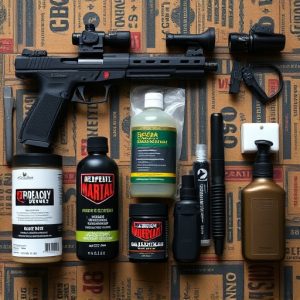Mastering Personal Safety: Products, Training, & Confidence
Personal safety is paramount in diverse environments, with simple strategies and personal defense pr…….
Personal safety is paramount in diverse environments, with simple strategies and personal defense products like sprays and alarms offering protection. Essential items include pepper spray, flashlights, alarms, and tactical pens for emergency situations. Online and in-person training provide flexible learning, while understanding self-defense laws is crucial to protect rights. Building confidence through mindfulness and strategic thinking enhances safety, empowering individuals to proactively face potential threats.
Personal safety is a vital aspect of our daily lives, yet often overlooked until it’s too late. In today’s world, being prepared and informed can mean the difference between staying safe and becoming a victim. This comprehensive guide explores various facets of personal safety, from understanding your first line of defense to essential personal defense products for everyday carry. We’ll navigate online vs. in-person training options, delve into legal aspects, and emphasize mental preparedness, ensuring you’re equipped with the knowledge to protect yourself effectively.
Understanding Personal Safety: The First Line of Defense
Personal safety is a fundamental aspect of our daily lives, often serving as the first line of defense against potential threats. Understanding and prioritizing it’s crucial for everyone, from individuals navigating crowded urban settings to those working in remote areas. By recognizing potential hazards and implementing simple yet effective strategies, you can significantly enhance your personal security. This proactive approach is where personal defense products step in, offering a range of tools and techniques designed to empower individuals and provide peace of mind.
Investing in personal defense products, such as self-defense sprays, alarms, or even basic first aid kits, can be transformative. These items serve not only as physical safeguards but also as a psychological deterrent, encouraging potential assailants to reconsider their actions. Staying informed about safety protocols and practicing situational awareness are equally vital components of personal safety, enabling individuals to quickly assess risks and take appropriate action if needed.
Essential Personal Defense Products for Everyday Carry
In today’s world, ensuring personal safety is a top priority for many individuals. While self-defense techniques are valuable skills to learn, having the right personal defense products can provide an extra layer of security in everyday situations. A well-equipped individual is better prepared to face potential threats and can increase their chances of escaping safely.
Some essential items to consider for everyday carry include a compact pepper spray, designed to incapacitate an assailant temporarily. Flashlights are another vital tool, as they can disorient attackers and provide visibility in low-light conditions. Personal alarm devices that emit loud sounds to attract attention are also useful, especially in crowded areas or during unexpected incidents. Additionally, self-defense tools like tactical pens or multi-tools with sharp edges can serve as last-resort defense mechanisms.
Online vs. In-Person Training: Choosing the Right Path for You
When it comes to learning about personal safety, there are two primary methods: online and in-person training. Online courses offer the convenience of accessing lessons from home, allowing students to learn at their own pace. This is particularly appealing for those with busy schedules or who prefer digital learning environments. Personal defense products, such as self-defense tools and tactics, can be integrated seamlessly into these virtual sessions, ensuring individuals receive practical knowledge without leaving their homes.
On the other hand, in-person training provides an immersive experience. It allows for hands-on practice with real-life scenarios, which is invaluable when learning self-defense. This method is ideal for those who benefit from physical interaction and immediate feedback. In-person classes also foster a sense of community among participants, creating a supportive environment to enhance the overall personal safety journey.
Legal Aspects and Self-Defense Rights: What You Need to Know
When it comes to personal safety, understanding your legal rights and responsibilities regarding self-defense is crucial. Every individual has the inherent right to protect themselves, but it’s essential to know the boundaries set by the law. In many jurisdictions, you have the legal authority to use reasonable force to defend yourself or others against imminent harm. This includes the right to purchase and carry personal defense products like pepper spray, tasers, or self-defense tools, which can serve as powerful deterrents in potentially dangerous situations.
However, the legality of these measures varies across regions, so it’s vital to research and comply with local laws and regulations. Different countries and states have distinct rules regarding what constitutes reasonable force, where and how you can carry self-defense weapons, and any restrictions or requirements for their use. Staying informed about these legal aspects ensures that your right to protect yourself is upheld while also avoiding potential legal repercussions.
Building Confidence: Mental Preparedness for Any Scenario
Building confidence is a vital aspect of personal safety, enabling individuals to face potential threats with mental preparedness and resilience. Mental fortitude involves cultivating a sense of calm and clarity under pressure, which can be achieved through various practices. Engaging in regular mindfulness exercises, such as meditation or deep breathing techniques, can help individuals stay grounded and focused, enhancing their ability to assess and react to any scenario effectively.
This mental preparation extends beyond relaxation; it includes developing strategic thinking and problem-solving skills. Practicing scenario planning, where you envision and rehearse potential threats, can build confidence in your ability to handle them. Additionally, staying informed about personal defense products available on the market empowers individuals to make informed decisions and take proactive measures for their safety.


